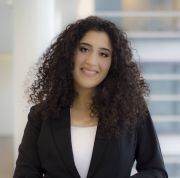There are some reasons why I think that we are in the golden age of addressing gaps in medical education through technology:
High-quality modules and curricula are widely available online:
One of the most important roles of a medical educator in this age of technology is that of a content curator, rather than a content creator. This is because so many high-quality modules are being created and shared online by national experts that educators aim should be to curate an educational experience for their students rather than create them from scratch.
For example, after a small amount of research, I found the following resources from medical societies to teach their respective subjects:
- American Society of Addiction Medicine
- American College of Surgeons
- Infectious Diseases Society of America
- Nutrition in Medicine
- American College of Preventive Medicine
Not only was I able to find online modules for medical students and residents, but I was also able to find examples of entire curricula available for implementation at any institution. One example is the Health Disparities Track (HDT) within the Tinsley Harrison Internal Medicine Residency Program at the University of Alabama at Birmingham. MedEdPortal offers resources for curricula and learning materials, such as their virtual learning resources that cover a range of different topics. Aquifer provides virtual patient cases backed by evidence-based medicine for medical students in their clinical years. Technology has allowed us to amplify the learning experience by commoditizing teacher expertise through high-quality online resources that are widely available.
These online resources also allow for convenient, asynchronous learning that students integrate into their personal schedules as they deem fit. In this way, such courses promote the integration of topics that have previously been overlooked in medical education by giving students the resources and flexibility to integrate these materials within their busy clinical schedules.
Artificial intelligence has streamlined the educational experience (for both students and teachers)
As we seek to address curricular gaps, artificial intelligence, including virtual and augmented reality, can facilitate learning by enhancing visualization of anatomy and increasing knowledge gain and retention. As medical practice looks to evolve, so will medical education, and more gaps in medical education will make themselves known as this transition occurs. Machine learning can also leverage multiple data platforms and larger datasets for the sake of quality improvement, the development of precision and preventive medicine, and the elucidation of novel trends in data that may give rise to new areas of medical research and clinical practice. Artificial intelligence can also streamline the educational experience by facilitating assessment, feedback, and instruction by tracking students’ progress and recommending resources based on their educational needs. Therefore, technology has promoted the development of adaptive learning environments, which are those that adapt the educational experience to the needs and abilities of individual learners. In this way, artificial intelligence will not only elucidate further gaps in medical education, but also provide us with the tools to address them.
Technology can complement teachers’ expertise
Technology can also enhance the social aspect of learning through discussion boards and video conferencing. As opposed to a classroom that traditionally features more engaged students in the front of the room, online learning environments provide all students with equal access to both the teacher and learning resources. Furthermore, online software is able to capture discussion amongst students and teachers, such that a question that would have been fleeting or less adequately covered in an in-person format would be given more attention as a written question online. Such discussion boards are also able to capture high levels of discussion amongst students and teachers for reference by others at any other point of time in their study. Lastly, modalities such as video conferencing have allowed us to bring national and international experts together to share their expertise in real time with other students and faculty.
There are a wide variety of technologies available
Canva, MindMeister, Powtoon, and Kahoot are some of the many that allow educators to convey their expertise while increasing students’ retention and engagement. To do so, many of these technologies employ gamification strategies. For instance, the Game-based Education in Residency (GamER) Study showed that amongst pediatric categorical residents rotating through the PICU, an interactive online mechanical ventilation simulator was shown to increase knowledge gain and retention. The Harvard Macy Institute “Transforming Your Teaching for the Virtual Environment” course showcases some of these technologies, which allow for the targeting of gaps in medical curricula by tailoring study materials to the individual learner and the individual topic, through infographics, podcasts, mind maps, and presentations.
How can we address gaps in medical education, using technology or otherwise?
Wafa Nabi

Wafa Nabi, MD is an internal medicine resident at Yale New Haven Hospital and a faculty member for the Harvard Macy Institute “Transforming Your Teaching for the Virtual Environment” course. Wafa’s areas of professional interest include internal medicine, cardiology, and medical education. Wafa can be reached via email.

